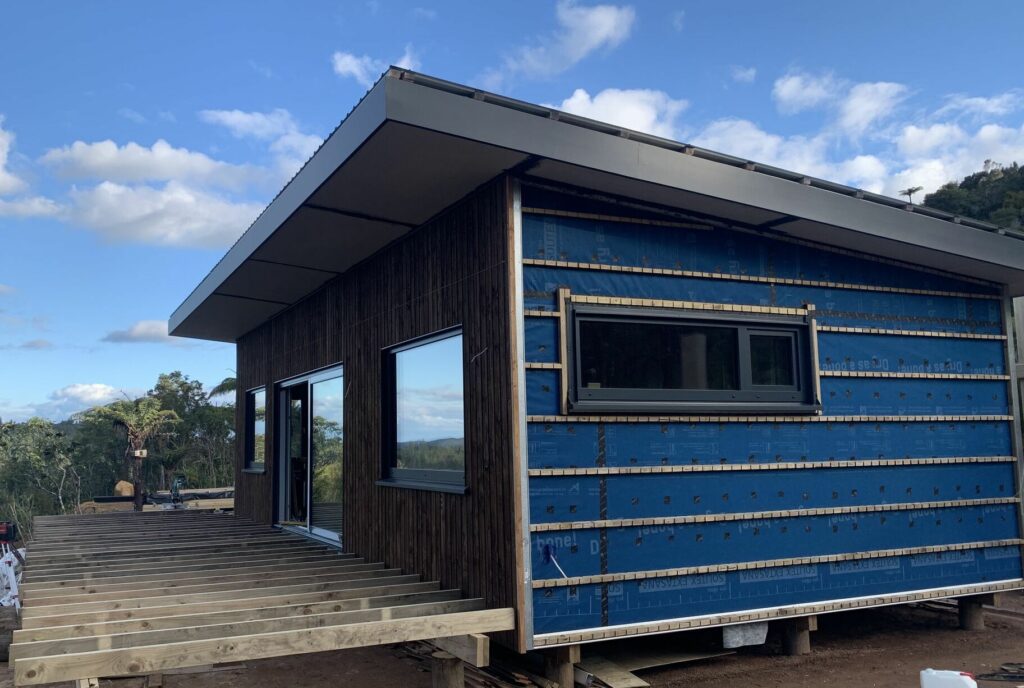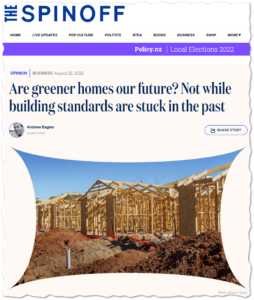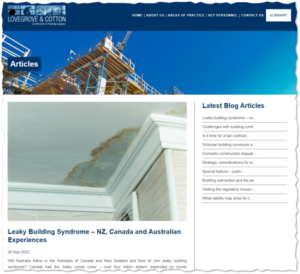Here’s a detailed but accessible write up about leaky homes that takes an international perspective. Written by Australian lawyers who specialise in construction law, it considers the risks emerging for Australia and compares it to the Canadian and New Zealand experience. Lawyer Kim Lovegrove says increasing numbers of leaky apartments are coming to light in Australia. He notes that in …
NZ’s first EnerPHit wins architecture awards

Congratulations to Terry Bryers and the construction team for winning a fistful of awards: the Auckland/Northland/Coromandel Supreme Renovation of the Year award, the Renovation Over $1.5 million category, and a Gold Award. According to the Stuff write up, “While the house retains its original concrete structure, it looks and feels completely different. The judges described the renovation as “incredible” and …
Coromandel Passive House: small, off-grid and tracking for Premium designation

The North Island is finally on track to have its first Passive House Premium home. Steven Hughes’ small but perfectly formed house in the Coromandel Peninsula has passed pre-construction review. That’s the first and most important hurdle to clear for certification. The Sustainable Engineering certifiers have reviewed all the documentation and analysis and have given an independent assurance that if …
PHPP accuracy proven by comparison to other tools

PHPP matches quite well for monthly heating and cooling energy demand when compared to lots of dynamic energy modelling software tools. And it should, as the equations/methods in PHPP have been developed (and simplified) by reference to many dynamic simulations. The bar graph comparing the monthly heating and cooling energy demand has the PHPP as the rightmost bar. Note that …
Calculating building system shutdowns in PHPP

It’s common for some non-residential buildings to be unoccupied for periods of time, during which the ventilation and conditioning is turned off. Schools and office buildings are common examples; think of after school hours each day or weekends where heating/cooling may be on only for 6 hours each day. In such circumstances, turning off ventilation and conditioning during the unoccupied …
World’s biggest Passive House office rises in Boston

Sometimes I take a look to see what’s going on in Massachusetts, just for old times sake. And look at this: the Winthrop Center is a Boston high-rise that will be the largest Passive House office building in the world. It’s a 211m high mixed-use tower with 75,000m2 of office space and 317 luxury residences, among other facilities. I’ve worked on …
Remove regulators’ liability and we might see more innovation in the building sector

Writing for The Spinoff recently, NZGBC head Andrew Eagles takes to task the Commerce Commission’s findings into competition in the residential building supplies market. “Not only does our industry suffer from a reliance on the ‘tried and tested’, but this conservativism is backed by a risk structure that incentivises our building officials to be wary of anything new. Products commonplace …
Make comfort a goal of any renovation
“Yeah, our old housing stock is terrible, but modern homes are all good.” It’s disheartening how often I hear this, about newly built homes constructed to only just meet the legal minimum of the NZ Building Code. It’s not true. And expensive retrofits can be miserable too, unless they have been designed (and modelled) to ensure comfort. Steve Hughes, from …
(Thermally) break that steel

Graeme Jacobs is the Director at Jacobs & Munro Architects Limited and he recently posted about an elegant solution his firm sourced in order to create a thermal break in a steel ridge. The walls and roof in this project are Formance SIP and the steel ridge beam is fully inside of the thermal envelope (as I’d recommend) … except …
